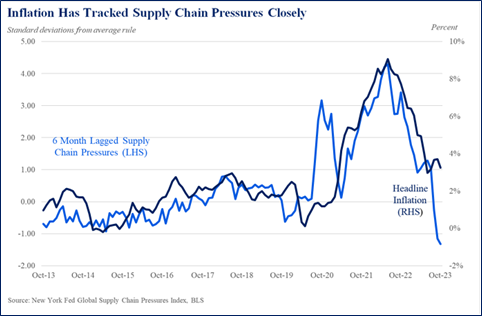Biden Administration unwraps package of supply chain support policies
Initiatives to include over 30 actions including creation of White House Council on Supply Chain Resilience.

A broad set of new policies from the Biden Administration is set to strengthen America’s supply chains, lower costs for families, and secure key sectors, the White House said today.
Details of the plan will include more than 30 new actions that are set to be announced today at the inaugural convening of a new White House Council on Supply Chain Resilience.
“These actions will help Americans get the products they need when they need them, enable reliable deliveries for businesses, strengthen our agriculture and food systems, and support good-paying, union jobs here at home,” the White House said in a statement. “Robust supply chains are fundamental to a strong economy. When supply chains [are] smooth, prices fall for goods, food, and equipment, putting more money in the pockets of American families, workers, farmers, and entrepreneurs.”
The initiatives will follow previous White House steps taken to address acute supply chain crises caused by the pandemic, including an Executive Order on America’s Supply Chains and a Supply Chain Disruptions Task Force, the White House said. Additional investments to strengthen supply chains and prevent future disruptions by expanding production capacity in key sectors and building infrastructure occurred through the CHIPS and Science Act, the Inflation Reduction Act, and the Bipartisan Infrastructure Law.
The newest round of changes will include:
- use of the Defense Production Act to make more essential medicines in America and mitigate drug shortages
- cross-governmental supply chain data-sharing capabilities such as the Department of Commerce’s Supply Chain Center and the Department of Transportation’s (DOT) Freight Logistics Optimization Works (FLOW) program
- launch of the quadrennial supply chain review to update criteria on industries, sectors, and products defined as critical to national and economic security
- the Department of Homeland Security (DHS) will launch a new Supply Chain Resilience Center (SCRC) dedicated to ensuring the resilience of supply chains for critical infrastructure, including near-term priorities to address supply chain risks resulting from threats and vulnerabilities inside U.S. ports.
- the DOT will launch a Multimodal Freight Office that is responsible for maintaining and improving the condition and performance of the nation’s multimodal freight network including through the development of the National Multimodal Freight Network
- monitoring of climate impacts through an effort coordinated by the White House National Security Council, Office of Science and Technology Policy, and the Council of Economic Advisers, in partnership with the National Oceanic and Atmospheric Administration (NOAA)
- ensuring energy and critical mineral supply chain readiness through a DOE assessment tool that accounts for raw materials, manufacturing, workforce, and logistics considerations
- defense supply chain mapping and risk management through a Supply Chain Mapping Tool created by the DOD to increase supply chain visibility over 110 weapon systems
- holding a Supply Chain Data and Analytics Summit in 2024 to invite expert input into supply chain risk assessment models and tools.
- artificial intelligence (AI) hackathons to strengthen critical mineral supply chains, organized by the USGS, the Defense Advanced Research Projects Agency (DARPA), and the Advanced Research Projects Agency-Energy (ARPA-E)
- risk mapping for labor rights abuses, supervised by the Department of Labor (DOL)
In reaction to the plan, the Consumer Brands Association cautioned the White House to ensure that its policies do not unintentionally compromise U.S. manufacturing jobs or negatively impact supply chain fluidity, but otherwise said it supported the effort to strengthen supply chains and domestic manufacturers. “America's consumer product companies share the Biden administration's commitment to domestic manufacturing and strengthening supply chain resilience. Programs like the Freight Logistics Optimization Works (FLOW) and efforts to enhance supply chain visibility at the Department of Commerce build on collaborative exchanges between the Administration and private sector stakeholders, including food, beverage, household and personal care manufacturers that create and sustain 20 million jobs across the country,” the industry trade group’s president & CEO, David Chavern, said in a release.
The financial services firm Moody’s Analytics also gave cautious approval to the sweeping plan. “Supply chain stress has eased measurably over the past year and the Biden administration’s announcement is another step in the right direction,” Jesse Rogers, an economist at Moody’s Analytics, said in a statement. “While unlikely to resolve some of the more complex issues plaguing supply chains in one go, measures targeting pharmaceuticals, climate infrastructure, data security, and logistics will bolster resilience and get the ball rolling on smart infrastructure and global cooperation.”
Editor's note: This article was revised on November 28 to add commentary from Moody's Analytics.
Related Articles

Copyright ©2024. All Rights ReservedDesign, CMS, Hosting & Web Development :: ePublishing